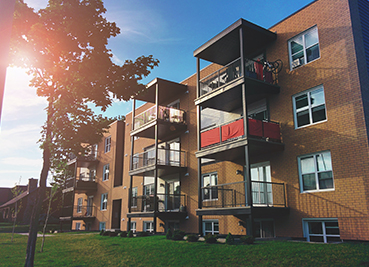
As seen in Colorado Real Estate Journal
There are challenges and bright spots throughout Denver’s commercial real estate market as we head into the final months of the year. Downtown Denver, as it relates to the office market, is struggling both in terms of leasing and occupancy. Some of the larger buildings are headed to or in special servicing and they’re either going back to the lender or the ownership will try to negotiate extensions and pay downs. The Cherry Creek market is different. It continues to be one of the hottest markets in the area.
Most lenders are taking a selective approach by market and by product type. When we get a new request, “office” tends to be a bad word with most of the lenders. But in certain areas where there is strong demand, more of the suburban areas, then lenders will look at those properties.
On the equity side, most sources still favor multifamily, especially build-to-rent. Office is a nonstarter, unless it is deeply discounted. Retail, industrial and hotels are holding their own in terms of demand, but the increased cost of capital and exit cap rates makes underwriting acceptable returns more difficult. On the equity side, my sources are focused on preferred equity and general partner equity. Life companies are active with construction to permanent financing, but at no more than 60%-65 % loan to cost, indicating more sponsor equity is required. The limited partner market has thinned out considerably, with few players willing to place bets. Most transactions where lenders are active are now focused on debt coverage ratios as the main driver for debt proceeds.
For that perspective to change for LPs, it will require a better comfort level in general about where we’re headed at the overall economy. It depends on what the Federal Reserve does in terms of future rate increases. Inflation is still too high, so another round of increases may be in the offing. LPs need a reasonable sense of stability in the debt markets to start investing again.
There are several strategies we suggest investors take to best navigate the challenges and secure financing for their projects. They can sit tight if their loans are not due immediately and don’t have to avail themselves to either a bridge loan or equity infusion. For the investors who have short-term loans coming due in the next 18 months, it’s likely to be a difficult scenario. They’ll have to seek some additional equity or bridge financing, which is pretty expensive right now.
Denver still holds a pretty strong attraction for capital. We still have a modest amount of rent growth, in the 2% range. Deliveries are still very strong and what has been built is being leased. We don’t see a lot of rent concessions in the market yet generally, however a couple of submarkets are clearly headed that way. The good news is that we are seeing decent job creation. Transaction volume has fallen off and will remain weak until there more clarity is restored to the market. Overall, investor demand for Denver assets remains high.
Lenders and capital players are still looking to place capital in the market. There is a lot of the news about downtown Denver and the new deliveries coming up over the next 12 to 18 months, which is being watched closely. On the debt side, there some banks that will still lend, but at lower levels, say in the 50%-55% range on the construction side. Debt funds can offer higher leverage in the 70%- plus range.
On the floating-rate loans that are coming due, there are a few options. Borrowers can secure bridge financing, which is still expensive. Or they may consider bringing in preferred equity or rescue capital. They could also put it on the market and potentially sell it at a loss or break even. For investors who are way underwater, they might try and negotiate with their lender or hand back the keys. So, there are a few options.
Unfortunately, we’re still in a tight labor and materials market and are not able to deliver much better than a 5.5% yield on cost for on new construction. Many of the equity sources now demand a 6%-plus going-in yield on cost, making it difficult to underwrite new projects in Denver.
We’ve not seen too much distress yet in the Denver market. There are a number of groups that are now starting to offer note on note financing. We think that’s the first step to get the capital going. Investors have been trying to stall as much as possible, hoping that the Fed would stop raising interest rates. We think we are close to the end. But we’re not there yet. We think we’ll start to get some activity here in the next quarter or two quarters.
This time, the root cause of distress is different and probably not so widespread compared with previous times when much of that debt rested with the savings and loan industry and banks, both foreign and domestic. The office loans in Denver are the most obvious candidates and most will go into nonperforming. So, debt will go to special servicing first, then be disposed of in the marketplace through note sale auctions. Several distressed debt funds have been created to buy this paper.
The advice we offer investors to secure capital for their projects as the market transitions from a low-cost money environment to a more expensive one today is to expect change but remain strategic in the search for financing. Our firm has the market pretty well covered in terms of the bridge capital market. Bridge capital is one solution for sponsors seeking to ride out the storm, but in all likelihood that will require more equity to be infused by the sponsor. We have solutions to consider for that scenario as well, including both debt and equity financing encompassing permanent, bridge, construction, joint-venture or preferred/mezzanine capital.
It is wise to remain somewhat patient and explore all the options that are out there. As we mentioned, there are debt funds, banks, insurance companies, private capital and credit unions. So, it’s just a matter of finding a solution that works.




